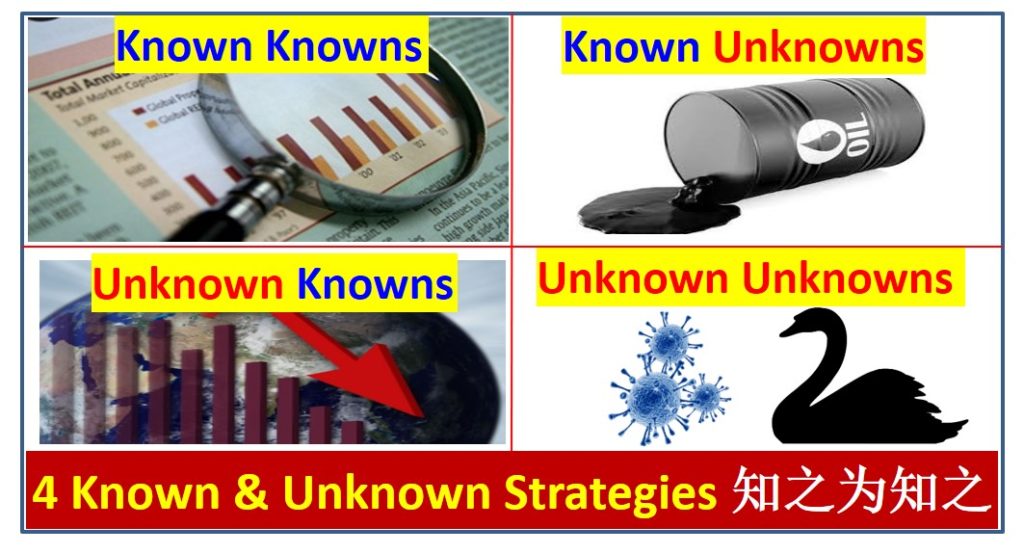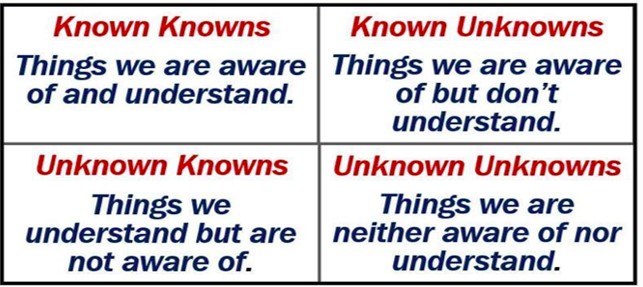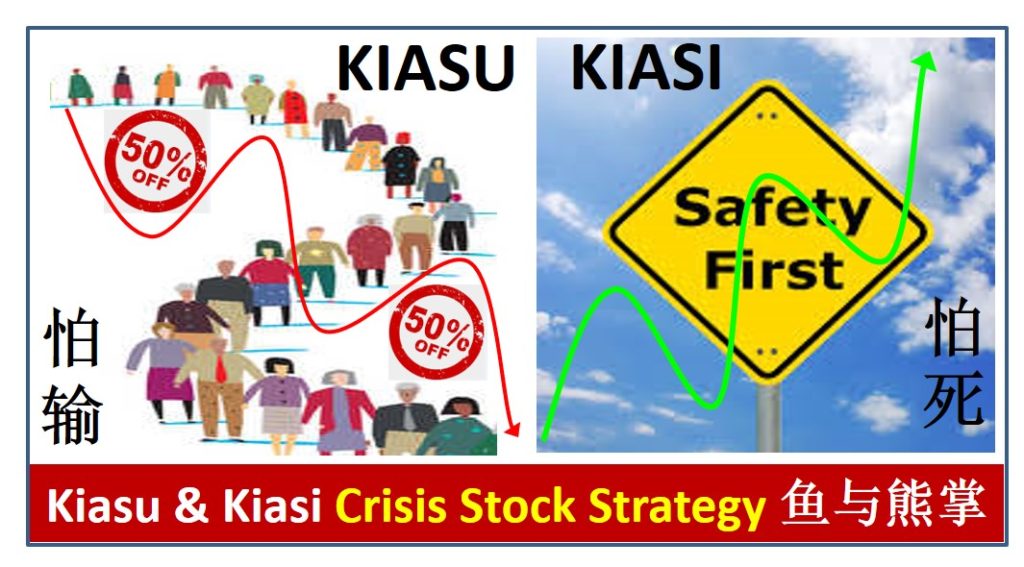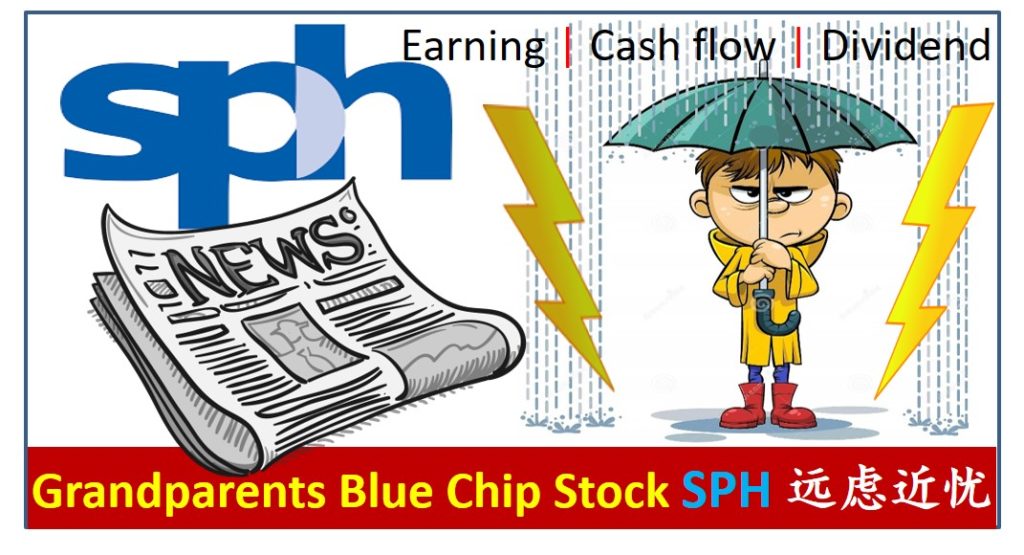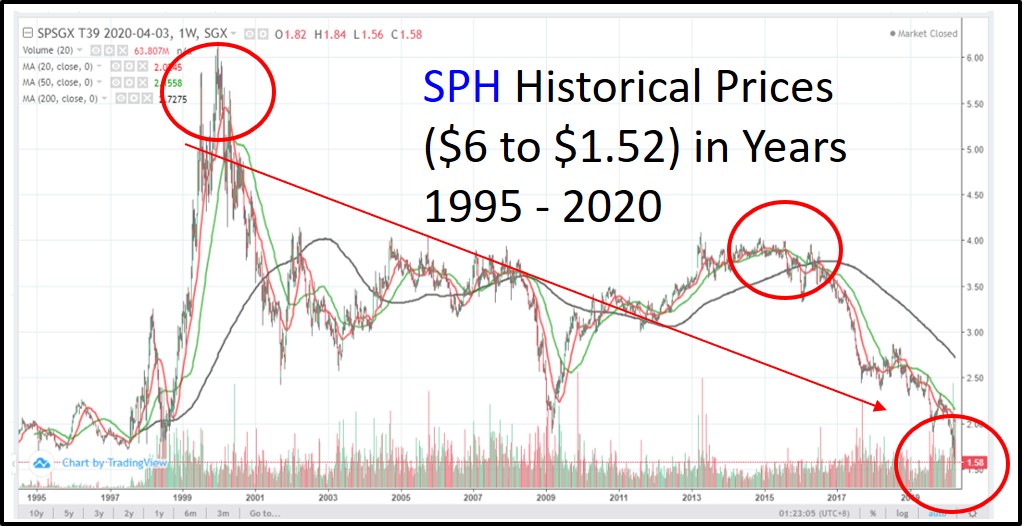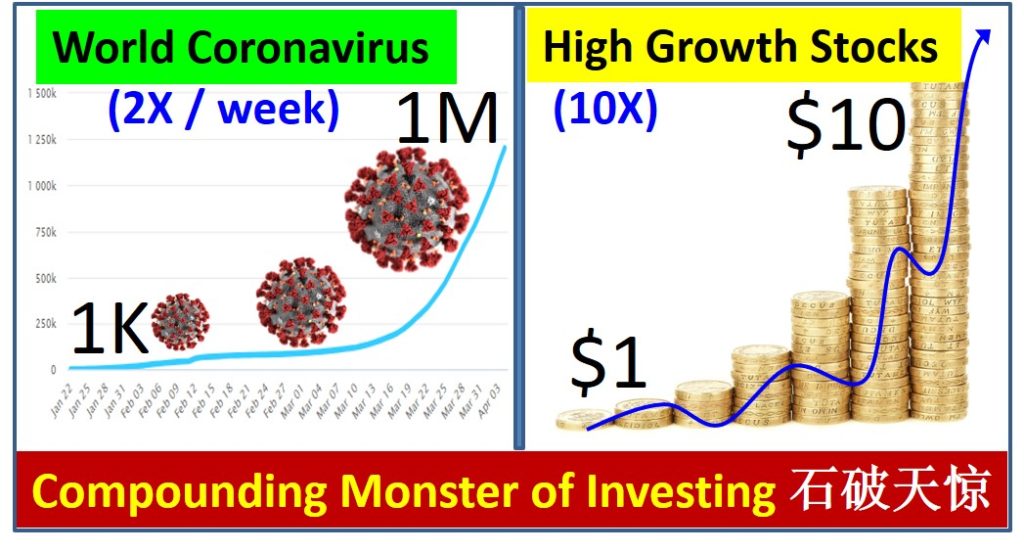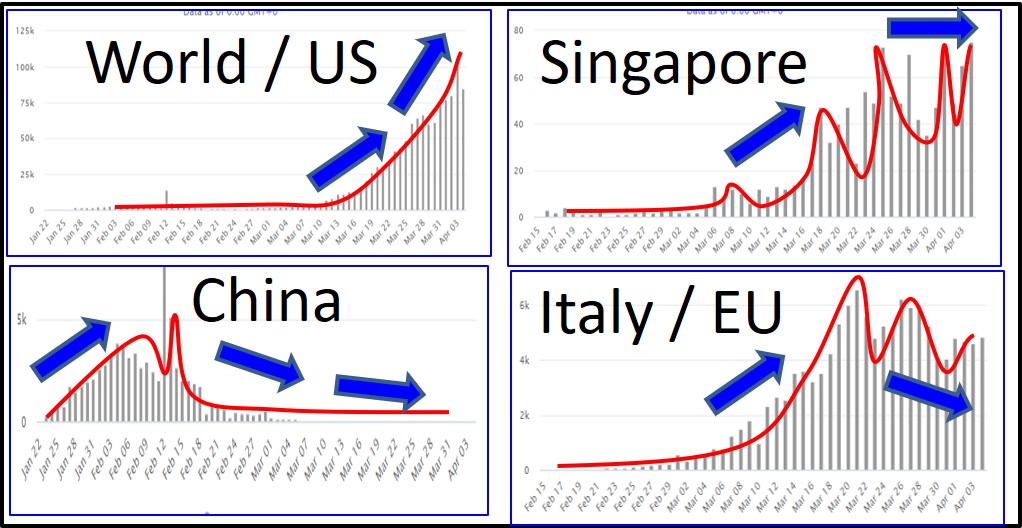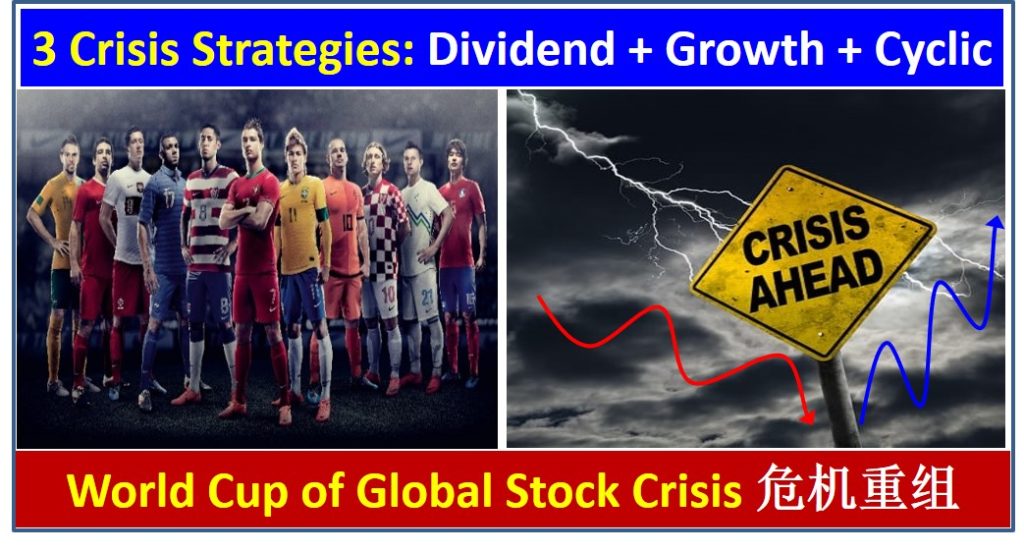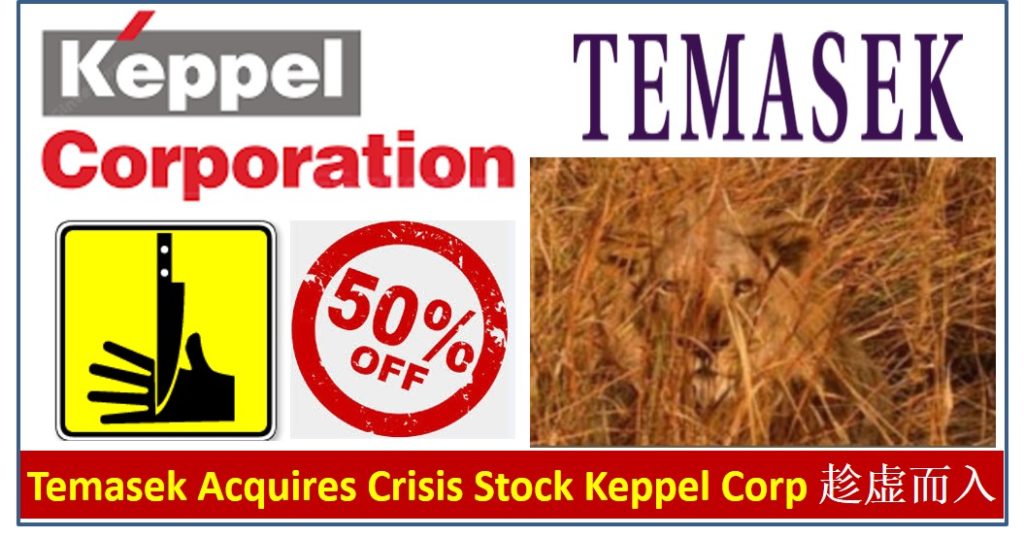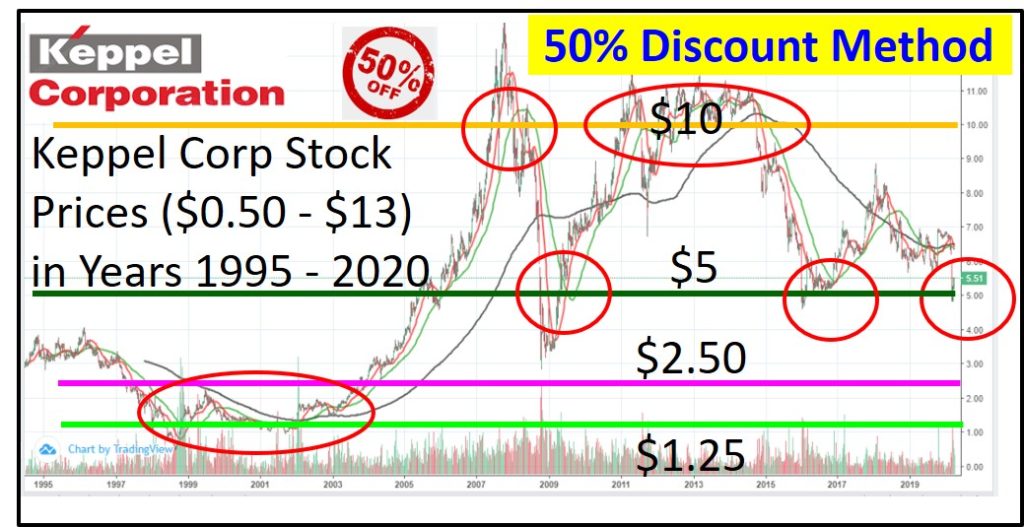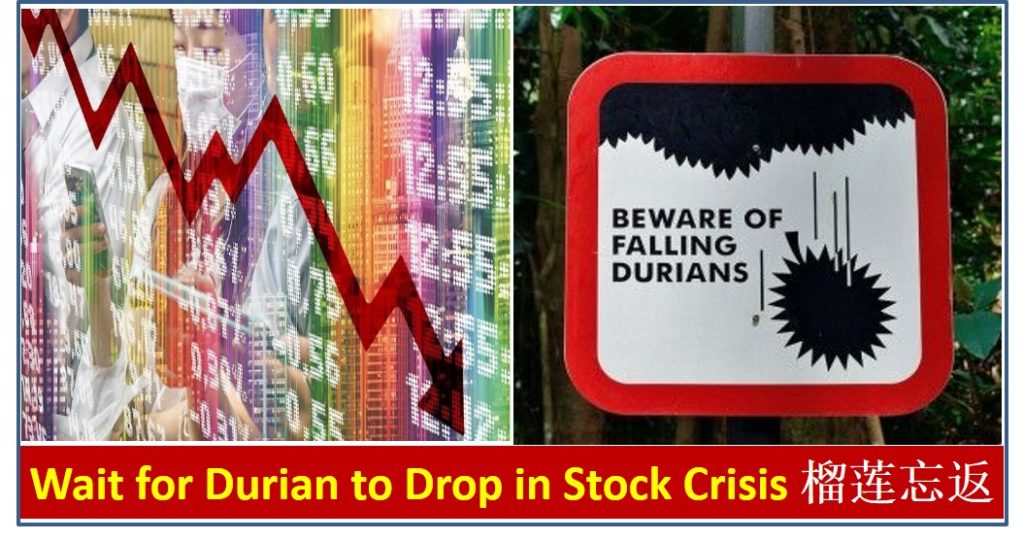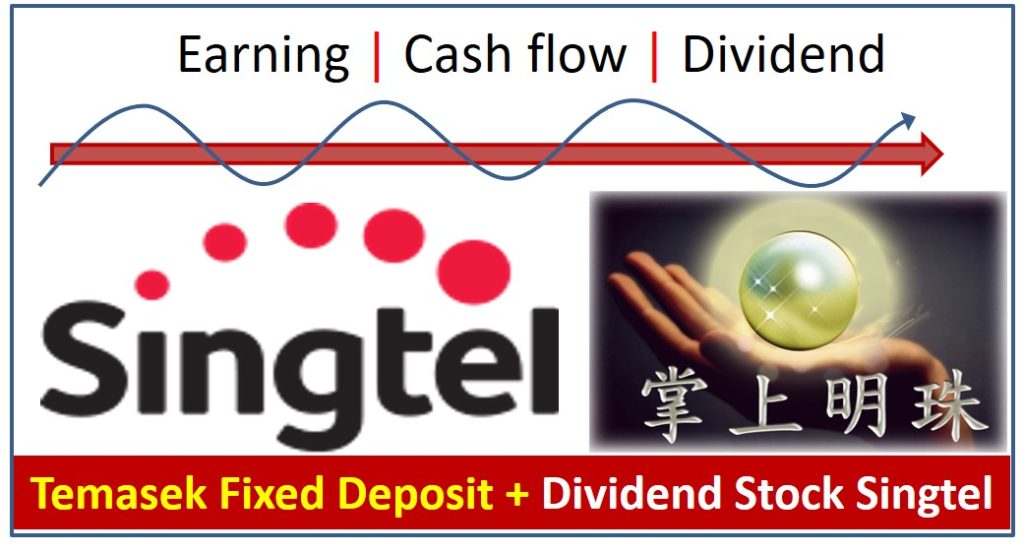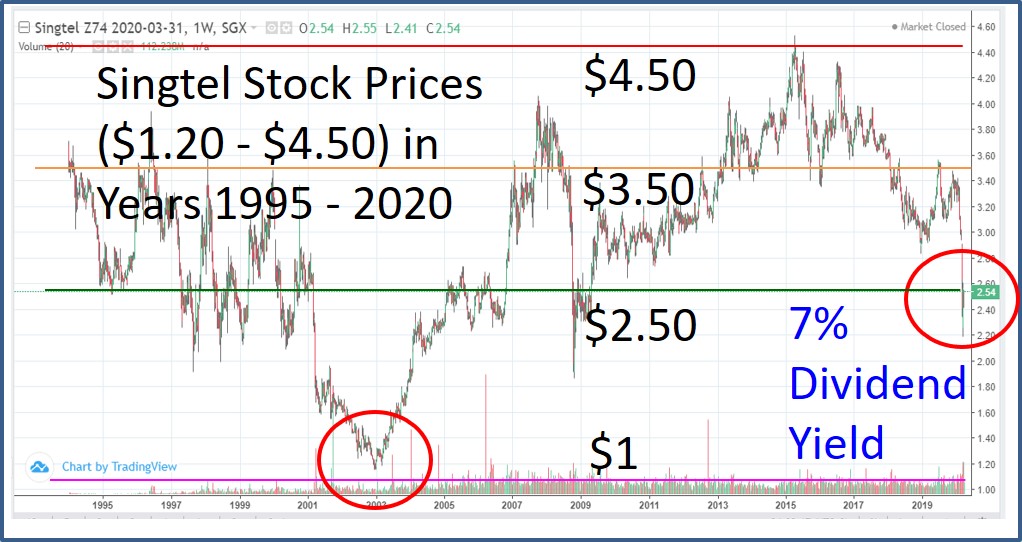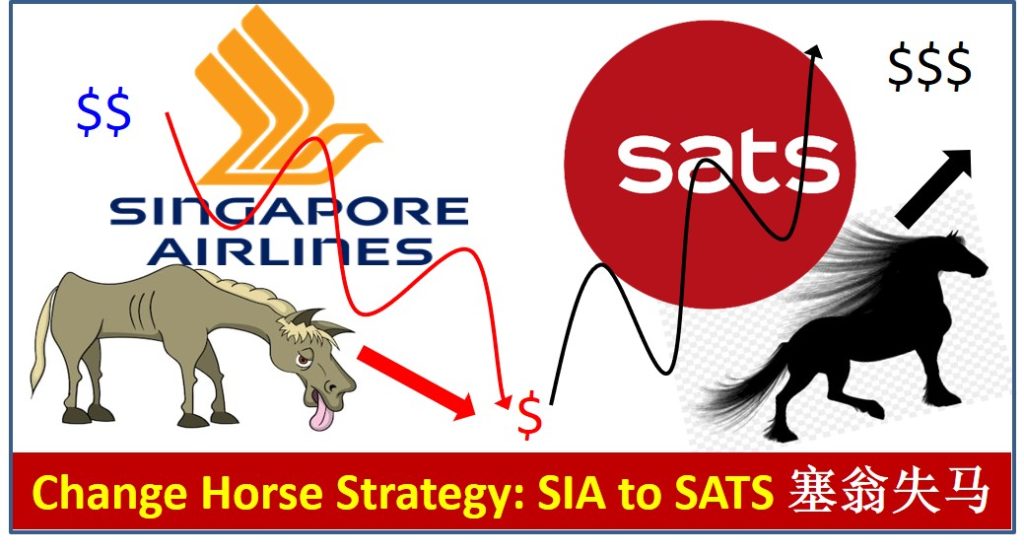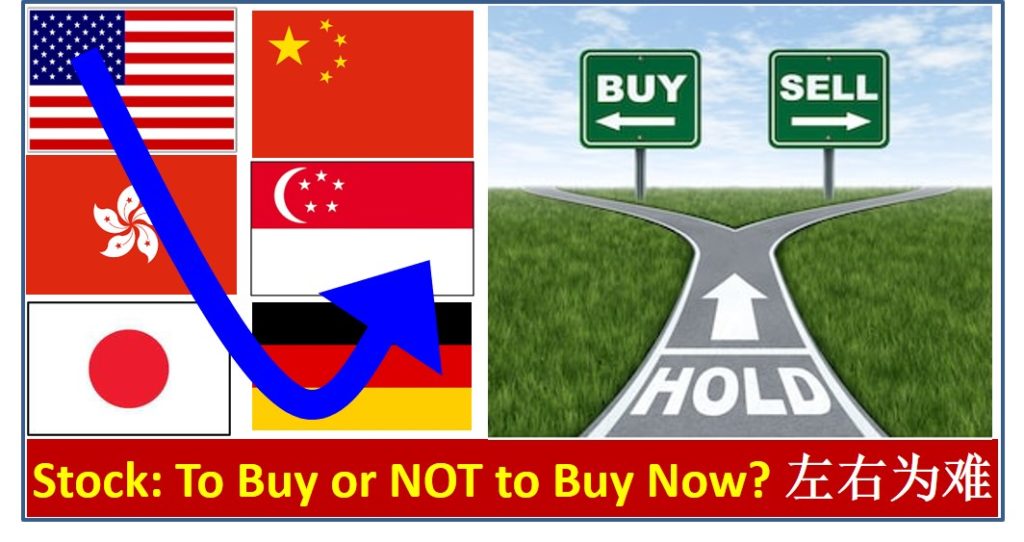
Some Ein55 forum members may not take any action in stock market for 5-10 years which I can understand is to wait for global stock crisis. The current global stock crisis worth attention for long term or even life-time investors.
Global stock market experienced a mini roller coaster ride, major correction of 20-30% in 1 month, recovering about 10-20% in last 2 weeks, leading for US, following by China and Germany (Europe), lagging for Hong Kong and Singapore),So, for current global stock market, “To Buy or NOT to Buy Now” is $1 Million worth of question to many people, especially this could be 5-10 years opportunity, may not come back easily if missed. When positioned right, one could save 5-10 years of waiting time. When positioned wrong, one could lose more (buy low get lower). It is a dilemma when one is standing at a junction of the investing path (左右为难), especially for those who have not done any new entry yet on stock, not sure whether to take the risk or miss it totally.
I just worry that some readers may aim for very low (eg. STI to drop to 0% optimism or S&P 500 to drop to 25% optimism) which is Level 4 stock crisis. What if it never comes eventually (eg. Coronavirus may fade away by summer, V-shape recovery in global stocks and monthly economy).
If one only has 1 bullet for investment, I assume it is trend-following and we just observe the first signal (1 day above 20 days moving average of stock index prices for at least STI and S&P 500, likely for most global stock indices). Next signal may be another 10% higher stock price with 1 day above 50 days moving average of stock prices. Will the readers give up the opportunity because of worry this is technical rebound before falling to another bigger crisis?
To be frank, current “global stock crisis” is only Level 3.5 crisis, which is similar to Euro Debt Crisis or Asian Financial Crisis, a regional crisis affecting half of the world, but not yet for US (only a major correction from high optimism to mid optimism of fair price).
Since we don’t know the scale of crisis (depending on condition of Coronavirus), if one does not follow the price trend (eg bear to bull reversal), insisting to aim for the lowest point (eg. STI below 2000 points or S&P 500 below 1500 points), else no entry, may miss the opportunity if it is just a major correction.
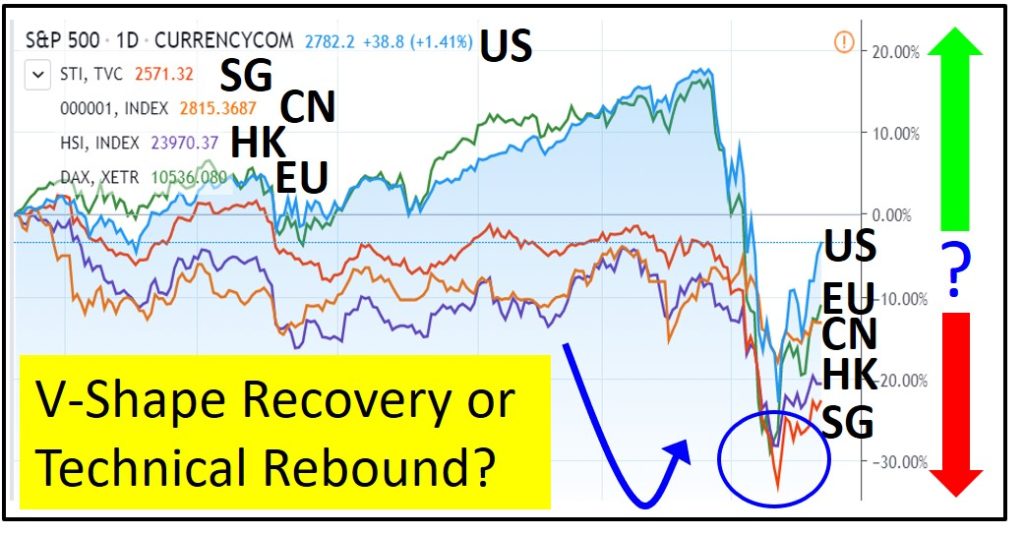
Based on Coronavirus world / Singapore condition, Apr 2020 is likely the most severe, double the cases every 7 days (see my earlier article, “predicting” Singapore would double from 1000 to 2000 cases by this weekend, which is coming soon with record daily new high of 287 infected cases today). However, we have a few key references, proving that Coronavirus could fade away in about 4 months if proper lockdown and isolation at home is implemented for 1-2 months.
China – successful model (full cycle completed)
Korea – runner up, cycle nearly completed
Europe / Iran – 3rd place, downtrend for over 7 days
World (US, SG, Asia ex China and Korea) – last phase, some see early signal of 1-2 days downtrend but not stable.
If Coronavirus does not discriminate the country (assuming all follows similar way of 100% isolation at home), then there is a good chance to see positive results as China and Korea, even we don’t know the future. This is similar to stock investing, when we follow certain strategies, even we don’t know the future, the chances of winning are high but one need to take calculated risks (tolerance level is different for each person, some could not take even 1% “loss” for 1 day, regretting immediately after entry).
To compromise in between the fear of missing out (miss the chance if does not invest if the worst is already over) and fear of losing in greater crisis to come (buy low get lower), Ein55 readers may consider multiple entries as described in a few earlier articles.
Here are the summary of steps in 1 possible strategy for current stock market (sharing for educational purpose, please make your own decision):
1) What to Buy
Focus in global giant stocks, prefer 50% portfolio having at least >3-5% dividend yield as protection, in case if it crisis get worse from Level 3.5 (regional / 50% world) to Level 4 (global financial crisis) or even Level 5 (Great Depression, affecting world economy for 2-5 years, similar in scale as 1929 Great Depression), then investors could average down (but trend-following traders need to cut loss following the exit plan).
There are over 1500 global giant stocks (based on Dr Tee unique criteria of Giant Detector). Long term value investor (especially for contrarian investor) may focus more on dividend giant stocks, about 100 in the world. Trend-following traders or investors may focus on growth stocks (may not have dividend). Some could compromise in midfielder stocks on growth dividend giant stocks, having the best of 2 worlds, could invest (for dividend during winter low optimism market) and trade (for capital gains during spring with higher optimism market).
2) Capital Allocation – Multiple Entries
Set a few multiple entries point, decide how many bullets to trigger, could be (1 x 100%), (2 x 50%), (3 x 33%), (5 x 20%), (10 x 10%), etc.
If only 1 stock at 1 time due to limited capital, then reader may consider index ETF (allow diversification, eg S&P 500 ETF, Hang Seng Index ETF, MSCI World ETF or STI ETF, etc), not perfect but safer than only buy any individual stock.
3) First Entry
Trigger the first bullet when see the first signal acceptable to own criteria, eg. counter-trend (eg. when price is below 25% optimism or even coming to 0% optimism) or follow-trend (eg. when see higher high and higher low, or price is above 20 days moving average as a few days ago).
The beauty of trigger the first bullet is one would not worry of missing the boat (eg 1/5 capital may be positioned), even if stock market recovers without returning to lower prices than the first entry, at least the investor still has 1/5 gift from heaven, better than empty handed. Traders may average up to follow the trend after 1/5 is winning and signal becomes clearer, Coronavirus becomes weaker while global QE or stimulus plans could be more (nearly everyone will get Ang Pao or relief fund from local government).
When the first entry is position, an investor would have a reference to compare for next entry, either X% lower to buy more for value investor, or Y% higher to buy more for trend-following traders. X% and Y% could be aligned to own personality, eg 5 or 10%.
4) Remaining Entries (Conditional)
For remaining bullets, one may trigger based on strategies, either counter-trend (every 5-10% lower in prices from first entry, trigger second entry) which is more for investing, or follow-trend (eg. every 5-10% higher in prices from first entry, trigger second entry) which is more for trading.
For trading, needs to have S.E.T. in plan, including cut loss when down by X%, eg 5 or 10% (to protect yourself in case it is just a technical rebound over the past few 2 weeks, still can preserve capital to buy in next reversal signal after the second dip). For investing, lower prices is blessing in disguise as price is lower each time with higher dividend yield, therefore stronger holding power.
5) Hold (Monitor)
Review portfolio regularly, not just to check stock prices, also ensure business fundamental is within expected level (eg. for sectors directly affected by Coronavirus, likely will make a huge loss, may not consider even if they are still giant stocks based on current prices and FA till now which may not have Q1 FA yet).
6) Sell (Exit)
For exit strategies, it is a good problem to have as you probably have make money by then one day, worry if the profits may disappear one day if not sold on time or hoping for higher upside with more capital gains.
You could learn further from Dr Tee in future 6-day Ein55 course, currently focusing more on potential entries and risk management.
==================
To a country government, probably need to spend 20% of yearly GDP in supporting economy (eg. pay for partial salary) 6-12 months but they could save 1-2 years of GDP (if falling to global financial crisis) or 3-5 years of GDP (if falling to Great Depression). When US stock market falls in last 1 month of crash, about US$12 Trillions was evaporated. So, QE of US$2 Trillions by Trump to save $12 Trillions of people’s wealth hidden in stock market is definitely a good deal (not to mention property market’s wealth which is not affected yet).
When S&P 500 is back to above 3000 points, STI is above 3000 points, global stock markets are back to 90% of original stock level, then global people would continue the bull market, win-win for all parties. Political economy has to consider popular support based on both stock market and economy. S&P 500 is report card of Trump, he only has time until summer (Jun – Aug) to show the report card above 3000 points again (possible as S&P 500 fells from 3300+ points to 2200+ points by 1/3, recovering to 2800 points today, only less than 10% upside away).
There is no need to worry if current stock market rally is dead cat bounce (Technical Rebound) or true recovery (worst is over, boat sailing off without return). Readers may just focus on what are known (intrinsic value vs price, optimism level, business fundamental, Coronavirus trend and successful experiences, government QE, etc – within 55 Ein55 investing styles) today to make a decision with calculated risks within tolerance limit (eg diversification over a portfolio of giant stocks, protected by dividend payment during potential long winter, position sizing, trend-following or simply cut loss when exceed the acceptable loss limit, etc).
I am not asking Ein55 readers to buy stocks now (sharing here is for education purpose, please make your own decision). I am urging all to use the free time at home this month to review your stocks, then taking the right actions (buy, hold, sell, wait, shorting) with strategies aligned to your personality. At least there is no regret when crisis is either over or becoming Level 4 or Level 5 crisis in future as you have planned for them. Even your decision is to do nothing now, it is also fine as you have given yourself a chance by reading until here.
==================================
Drop by Dr Tee free 4hr investment course to learn how to position in global giant stocks with 10 unique stock investing strategies, knowing What to Buy, When to Buy/Sell.
Learn further from Dr Tee valuable 7hr Online Course, both English (How to Discover Giant Stocks) and Chinese (价值投资法: 探测强巨股) options, specially for learners who prefer to master stock investment strategies of over 100 global giant stocks at the comfort of home.
You are invited to join Dr Tee private investment forum (educational platform, no commercial is allowed) to learn more investment knowledge, interacting with over 9000 member.

